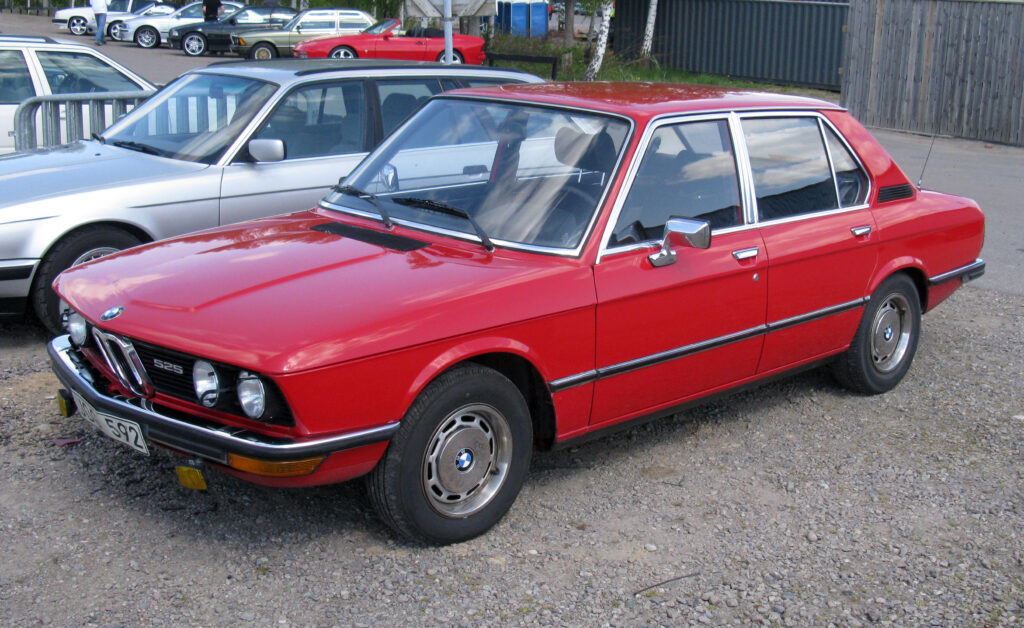
The BMW E12, introduced in 1972, is the first generation of the iconic 5 Series, a line of executive cars that have played a significant role in BMW’s success story. Here’s a more detailed look into the history of the 1972 BMW E12:
Introduction and Launch
BMW unveiled the E12 model series at the beginning of 1972. After the success of their “Neue Klasse” vehicles, BMW sought to advance its standing in the market with a new series. The number “5” in the name indicated that this was the fifth of BMW’s new series of vehicles to be produced. The E12 series was aimed squarely at the executive car market and it was larger and more luxurious than BMW’s previous offerings.
The first model to roll off the production line was the 520, followed shortly by the fuel-injected 520i. Both models were powered by a four-cylinder engine with a displacement of 2.0 liters. The cars boasted a distinctive, sporty design, reflecting the growing trend toward sportiness in the executive car segment.
Design Elements
The E12 featured a prominent “shark nose” design, which became a staple of BMW styling for decades to come. The car was designed by French automobile designer Paul Bracq, who brought a distinctive, aerodynamic look to the E12. The sleek, flowing lines of the car were a departure from the boxier Neue Klasse models and set a design standard for future 5 Series models.
The interior of the E12 was also notable. BMW introduced a driver-oriented dashboard, which became a defining feature of BMW interiors. The cockpit design was angled towards the driver, creating a driver-focused environment that highlighted the car’s sporty, dynamic character.
Engine and Performance
The initial 1972 520 model used a 2.0-liter, four-cylinder M10 engine that produced 115 horsepower. This engine was an evolution of the engine used in the Neue Klasse cars. The 520i, introduced in the same year, featured a fuel-injected version of this engine, pushing the power output to 130 horsepower.
In terms of transmission, a four-speed manual was standard, with a three-speed automatic available as an optional extra. All E12 models were rear-wheel drive, keeping with BMW’s tradition.
Notable Features and Technology
The E12 series introduced a number of innovative features to the BMW lineup. Among these was the check control panel, a system of warning lights for various maintenance and performance issues. This was one of the first implementations of this kind of system and demonstrated BMW’s increasing attention to technology and driver convenience.
Legacy and Impact
As the first of the 5 Series, the E12 holds a special place in BMW’s history. It solidified BMW’s reputation as a maker of sporty, luxurious, and technologically advanced vehicles. The E12 set the template for the sport-luxury sedan, a category that BMW continues to define.
The success of the E12 helped BMW establish a firm foothold in the global luxury car market. This model’s blend of sporty performance, driver-focused design, and high-quality construction became the hallmark of the BMW brand. The legacy of the 1972 E12 continues in every subsequent 5 Series model, with each new generation building upon the strong foundation laid by this pioneering vehicle.
